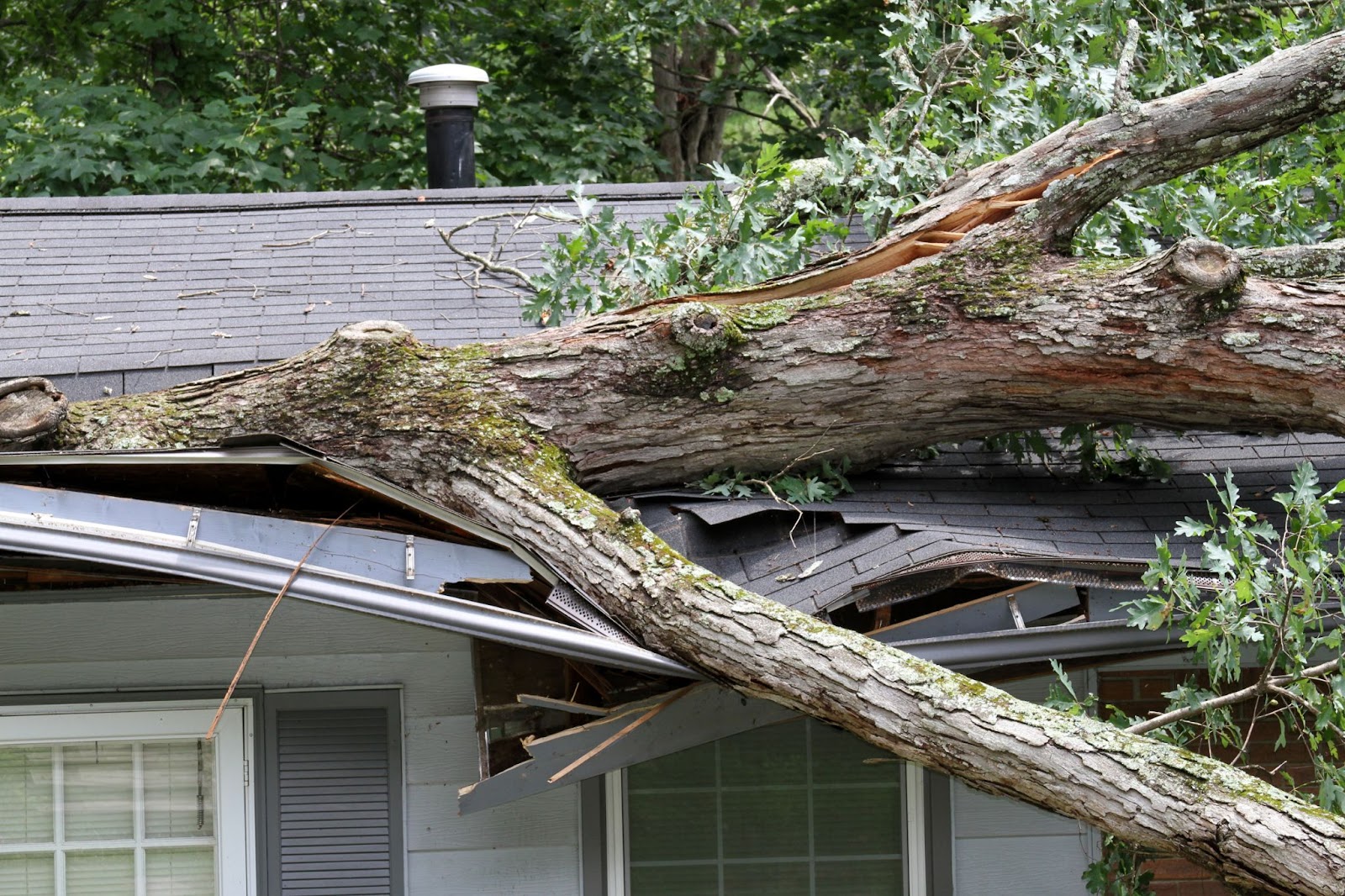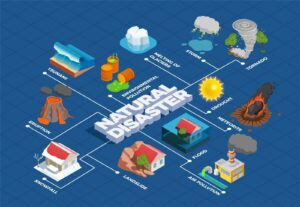Storm damage restoration is a daunting process; finding affordable recovery options is crucial.
When an unexpected home or natural disaster hits, whether it’s water and mold damage, fire or smoke damage, or storm destruction, the immediate shock is typically followed by a pressing matter: the cost of repair and restoration. How much will a water damage roof repair or other storm restoration project cost?
The storm outside may have passed, but the clouds in your mind are still thick. Today’s article is all about settling those clouds and setting your mind at ease. We’ll be exploring how to navigate the storm and restore your home on a budget.
Prioritizing immediate and low-cost actions
Once the wind stops howling and the rain lets up, the first step is to pause. It’s not uncommon to rush into action and address repairs and cleaning, but a few quick, thoughtful actions could save you time and money.
Remember, your safety must be your top priority. Before re-entering your house, check for hazards such as gas leaks, unstable structures, and downed power lines. Your life is worth much more than any repair bill. Not to mention, you could save yourself from additional bills associated with your health and further home damage.
Once it is deemed safe, grab your phone and start documenting. Take pictures and videos of everything, from the water-stained ceiling and missing shingles to the uprooted tree, and down to the smaller details like a cracked door frame.
This visual inventory is critical for the insurance claims you file. Narrate as your record, describing the damage you see. This is your evidence, so there’s no such thing as being too thorough.
The goal here is to prevent more damage. For example, a small leak could become a disastrous mold issue if left unattended. So, take steps to prevent further damage.
If you have roof damage, a heavy-duty tarp will be your best friend. Secure it over damaged areas with roofing nails or sandbags. For a broken window, use plywood to cover it. You can find these materials at your local hardware store or at nonprofit home improvement community stores, such as Habitat for Humanity Restore.
After a severe storm, damage could include flooding. If this is the case, act quickly to remove standing water with a wet/dry vacuum and use fans and dehumidifiers to dry out the space.
The faster you dry out the area, the lower your risk of developing further costly issues.
Be ruthless about removing water-damaged materials, such as insulation, drywall, and carpet, to prevent mold. It may be painful, but it will likely help your budget in the long run.
Navigate the insurance claim game
Navigating insurance companies after a disaster for storm damage restoration is often the most frustrating step. But approaching it strategically will make all the difference. Your insurance company is a business, and while they are there to protect you, they will prioritize protecting their bottom line. Your goal is to ensure they cover everything your policy says they should:
File your claim immediately
Do not wait to do this. The sooner you file, the sooner the process can begin and end. There are expiration dates in play, so do not delay.
Understand your policy
Before the insurance adjuster arrives, study your policy. Understand your coverage, deductibles, and any specific language about storm damage. This will give you leverage when talking with the adjuster.
Do not accept the first offer
The adjust will give you an estimate, but it’s exactly that: an estimate. Get multiple estimates from reputable contractors to prove the cost is higher. Use your documented evidence to back up your claims. If the offer is still too low, don’t be afraid to appeal their decision.
Keep meticulous records
Log every phone call, email, and conversation. Make notes and summarize conversations; keep recipes for temporary repairs, lodging, and food. Your policy likely covers these expenses, but you need proof.
Hire your own adjuster
For those facing complex or large claims, consider hiring your own adjuster who is not associated with your insurance provider. They work for you and represent you during the claims process. However, remember that they take a percentage of the final settlement. But in some cases, this may be a worthwhile investment to ensure you get a fair payout.
Leveraging government and community support
Sometimes insurance coverage falls short; plus, not everyone has insurance. In such cases, government and community resources can serve as a helpful lifeline.
FEMA disaster assistance
If your area has been declared a federal disaster area, you can apply for assistance from the Federal Emergency Management Agency (FEMA). Their programs provide grants for home repairs and temporary housing.
This isn’t a loan; it’s meant to make your home safe, sanitary, and functional —not return it to its pre-storm glory. Even if you have insurance, you may still be eligible if your losses exceed what your policy covers.
Small Business Administration (SBA) disaster loans
You don’t need to own a business to qualify for an SBA disaster loan. These low-interest loans are available to both renters and homeowners for the purpose of repairing or replacing damaged property and belongings.
Call 211
This is a great resource for connecting with local and national non-profits that offer disaster relief. Organizations like the American Red Cross often provide shelter, meals, cleanup kits, and financial support in the immediate aftermath of a disaster.
Habitat for Humanity
This organization often has critical home repair programs for low- to moderate-income families. They can assist with repairs that address health, safety, and accessibility issues. Check for a local chapter in your area.
Making budget-friendly repairs count
When it comes to the actual repairs, being smart with your money means focusing on effectiveness and prioritizing what you can do yourself.
- Start with temporary fixes — Before the permanent repairs begin, use inexpensive temporary solutions to stop further damage.
- Tackle DIY projects wisely — Not all repairs require a professional. Minor jobs, like repairing sections of a wooden fence or patching small cracks in siding, can be DIY projects. Though if you’re not comfortable, always hire a professional. Getting it wrong will only cost more in the long run.
- Hire contractors with caution — When hiring professionals, don’t take the first quote. Get multiple estimates from trusted water damage roof repair and storm restoration companies. Request references and verify online reviews.
Trust Total Flood and Fire with your storm damage restoration
Natural disasters can be devastating, both emotionally and financially, but it doesn’t have to break you. Total Flood and Fire is here to help with your storm damage restoration and guide you through the process affordably.
Our trusted team is not only skilled but also a fair and reputable company ready to take on your water damage roof repair project. We are available 24/7 to respond when you need us most. Contact Total Flood and Fire Restoration today.









